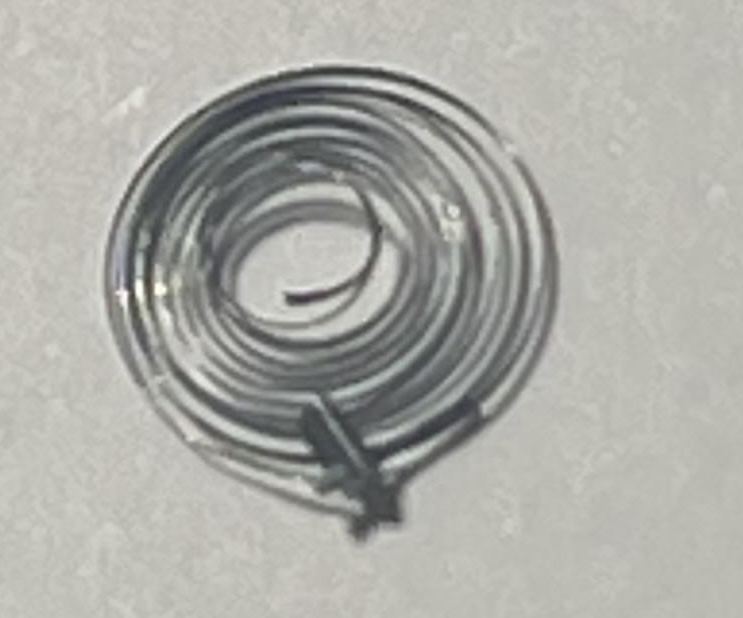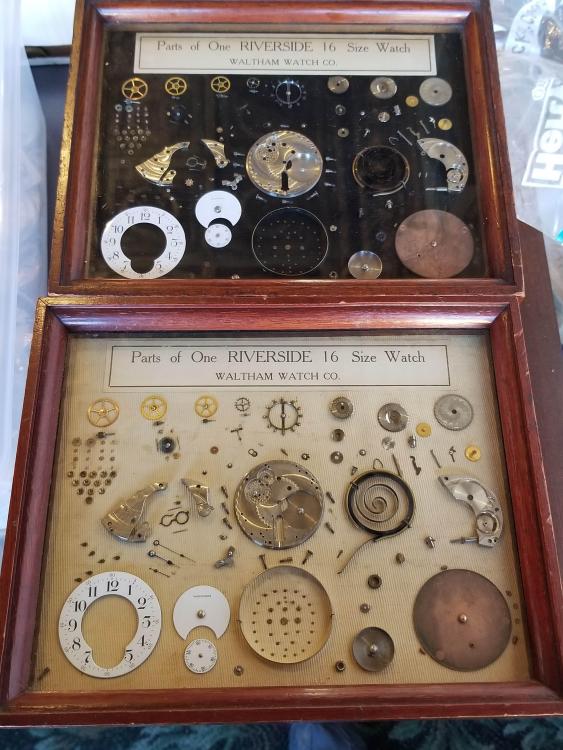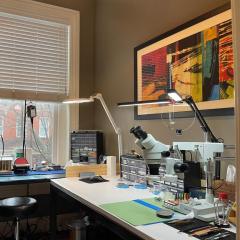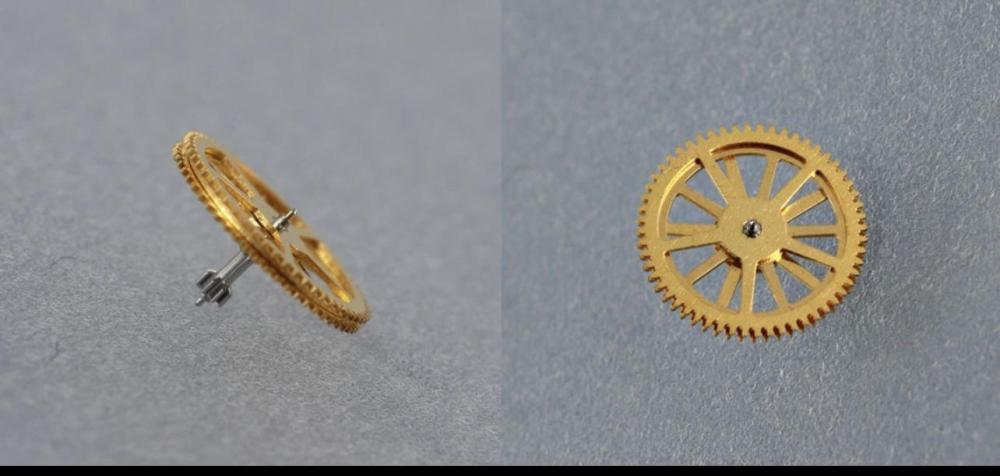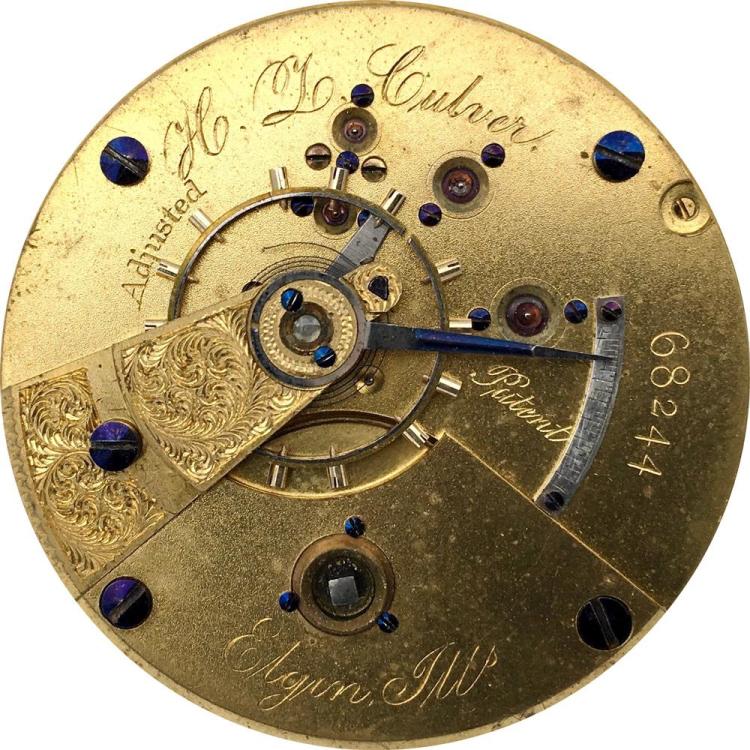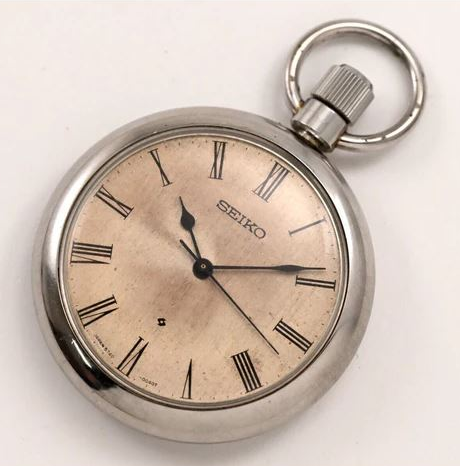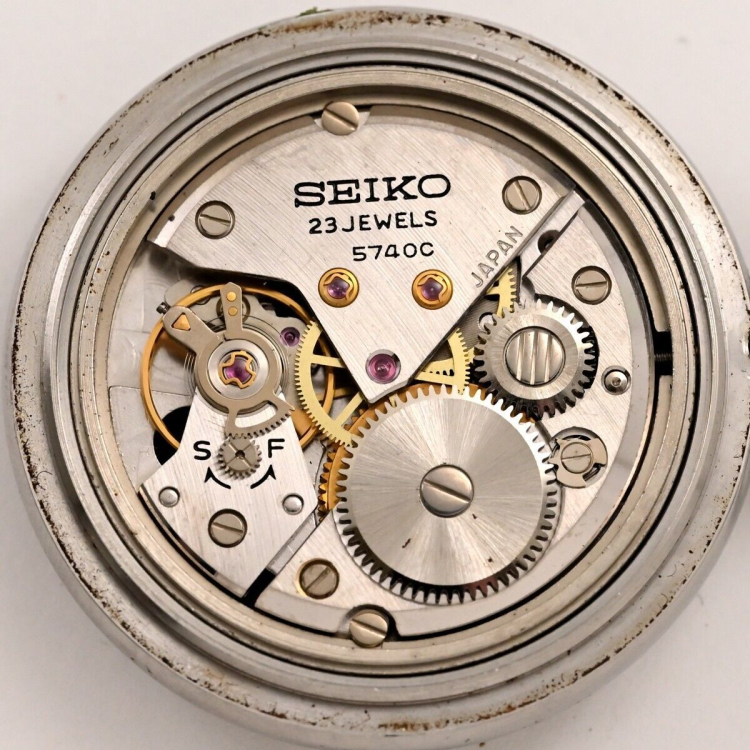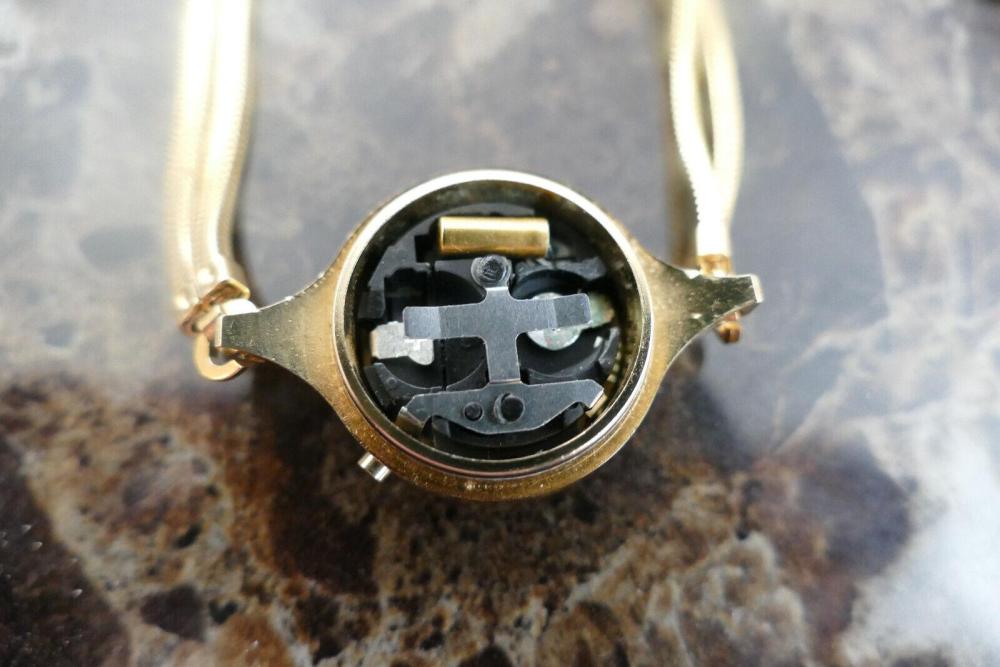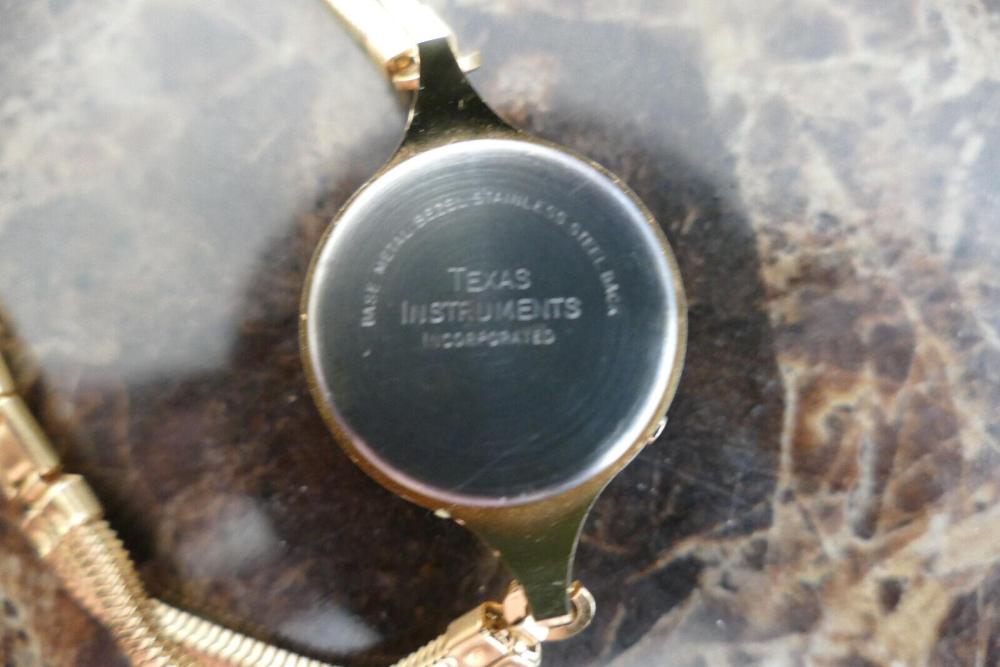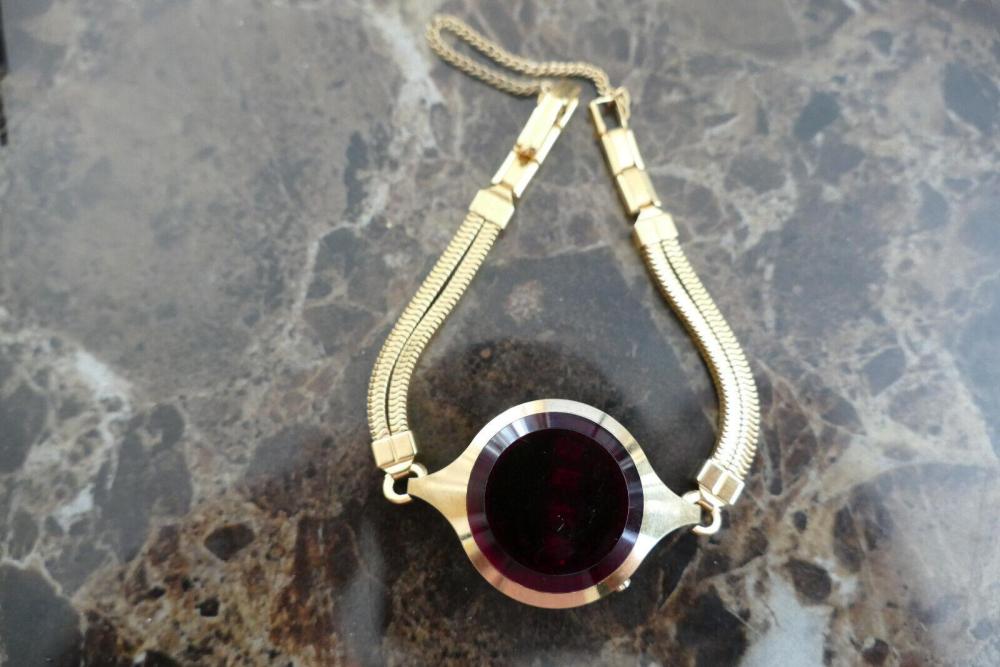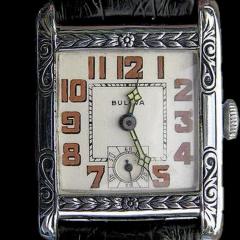Leaderboard
Popular Content
Showing content with the highest reputation on 10/27/23 in all areas
-
https://www.the-saleroom.com/en-gb/auction-catalogues/hansons/catalogue-id-hanson10596/lot-83937c69-6c79-4704-a867-b0a000974cc4 ...not exactly a bargain but this is quite a fall from last year's records (one fetched about 30K all in). I suppose it could be something about this piece but this one doesn't look bad at all... How long before one makes the 404 ...2 points
-
2 points
-
Found these up in a Colorado mountain town and thought that they were a really cool display pieces. Supposedly these were salesmen's samples. I ended up with the light background one. I also picked up a nearly complete K&D Series 600 staking set for a good price from the guy and some other small tools. It was worth the trek up there.1 point
-
Been making some head way on trying to straightening it but it's slow going and I know it will never be 100% right. As far as removing the parts and trying to refit them well that's well outside of my exp level1 point
-
The center end is probably broken , but it is not such a big problem as adding 2 aditional washers under 2 screws will solve this. Bit the shape of the spring is so bad in all it's lenght that it will be easier to drow it in a straight line and turn it again little by little than trying to repair as if it has just 1 or 2 or 3 different bent places. And yes, it can be done, but how isochrone it will be in the end? Hairspring vibration is good variant, In such cases I try hairsprings from all kinds of soviet calibers (have many of them) and usually find suitable one that needs just a little shortening1 point
-
Yes, hoping that is it. I tore the movement down again and paid extreamly close attention to the third wheel—it is an odd configuration in that the 3rd wheel has three sprockets to it—top is attached to the shaft and drives the sweep second hand pinion, middle is a free floating spacer and the bottom drives the forth wheel. Anyhow I did pull out some debris from between the sprockets, and reassembled the movement. Right now running as it should be I’m going to let it run 2 or 3 full wind cycles before buttoning up with calendar works and dial again to make sure the movement stays stable. There is one other issue, but I’ve decided to let it ride having put so much time into this project—whenever I try to get beat error below 1.0 using the stud armature, the timing and beat error goes way off. So I’ve decided to just live 1.2 beat error, strong amplitude anf ~0-10 sec per day in all positions.1 point
-
I gather the spring is not broke, as I magnified the pic of the collet and saw no piece of the spring in its slot. The price of a JLC balance complete usually makes one decide to master hairspring repair. Rgds1 point
-
Yes, this is the tool. I can judge only by the lever shape, but I am pretty sure that the movement has this kind of design like on the picture. I am not sure if the parts of this are replacible. For sure, the parts of english watches with same design are not replacible and no point to search for donor parts as they don't fit. Well, this is american watch and may be they are unified in some degree, but I have not tried - I usually don't use donor parts. You say the pivot sizes are different, but much more important are the distancess between bearings centers (esc. wheel - lever) and (lever - balance). They must be the same in donor as in Your movement. The hight of the pinions of the wheels and the lever staffs, the pinions diameter ant tooth count, the position in hight of the tables of the wheels, the size of rollers on the balances, the impulse stone sizes and distances from the balance staffs... All this must be same in both movements. As You see, the most secure way is to restore the original lever. And this is not so hard to do. How to use the depthing tool? Supposed there is a new pallet in the lever, but it needs to be adjusted. Supposed the other pallet is in it's correct place. You have to acuratelly adjust the tool to the distance between the holes of the lever and esc. wheel. Then, not to touch adjustment screw any more. Put the wheel and the lever between centers of the tool and check the action of the couple as in this video. In the video I change the distance, but here we will keep the distance unchanged and will move in or out оnly the pallet that needs to be adjusted. If the couple doesn't lock in some of the lever movement directions, we must move the pallet towards the wheel. If it locks in the very begining of the check, the stone must be moved from the weel untill the couple starts not to lock, then a little back to the point where locking begins to happen and then just a little bit more to ensure the locking is reliable. Then shellack to be aplied and the action to be checked in the movement.1 point
-
restricting my normal confusions to just this discussion I'm confused also as the image just isn't revealing enough. 18 karat gold is too soft for typically anything. than the problem with cold case screws is they do use them but the slots usually get messed up and a real pain to get them in and out without damage. Is looking at the picture and it's hard to tell how this all goes together. But from the description it looks like the stud is pressed into the back and the screws somehow threads into that and then threads into the movement told the whole thing together. then when I think about this I bet you have those are not hiring screws there probably stainless steel. Who knows what the stud is made out of it might be iron or steel. The problem is I don't think alum will dissolve stainless steel. It only typically dissolves iron alloy's which is why it shouldn't touch the gold but it probably wouldn't touch stainless steel in either. Then because the studs are pressed in I'm assuming they're not considered a casing component and you would have to make something http://cgi.julesborel.com/cgi-bin/matcgi2?ref=OME_6401 point
-
annoyingly I forgot the snip out the full image of the description but the description was really good and I think one of the timing machine results above came from the watch is purchasing. I is always forget that once the watches purchased is removed from the listing then it is a little different probably was cheaper as the dials faded but I don't care about things like that I think faded dials and other little things add to the character of the watch then it looks like the only other image I got was the movement. I really do have to remember to get all the images and snip out descriptions before placing orders1 point
-
Could be some problem with the 3th wheel. Take a good look at it, see if it is bent or needs trueing - it's table may rubb somewhere. When the period of bad work, You may put a dot on it with marker in a visible place - this way You will be able to observe if the bad period coincides with the same position of the dot.1 point
-
...seems fair since you'll be on cleanup duty...1 point
-
No problem matey, YOU can cut the wires, I will shout from a distance which colour to cut first. " CUT THE BLUE ONE " BOOOOOOOM .!!!!!!!! . " ACTUALLY NO CUT THE RED ONE " .1 point
-
1 point
-
For you pros out there these Breguet over coils are one of the more frustrating aspects of this as a hobby for me. The knowledge is sparse, grainy videos, 'leave it to the experts', ancient pictures of dead watchmakers sticking tweezers into strange species of wood, Bohr Model looking overcoil patterns, a whole drawer full of special Bergeon tweezers and hand-honed Frankentools...I sometimes wonder if learning to vibrate new is a better option, that's assuming appropriate raw hairsprings could be acquired... ...I have a couple watches sitting in the trays waiting for new balances that will likely be there forever... ...so if any of you want to step up with over coil boot camp I'm ready to enlist.1 point
-
Hi. Most natural causes of overwinding are jammed movements due to dirt , congealed oil and the like. What we have here is that the watch was wound beyond its capability, in other words the ratchet broke . Could easily been some other part of the keyless work that broke the result would have been the same. Ithink we can consider both terms as “ overwound” In a sense as the watch was rendered unusable by the owner mis treating the watch. In terms of OVERWOUND. Both are correct.1 point
-
This coil is worth sorting out, I would keep it + this balance and the collet, because it left the company matched with your balance, whereas a new spring of the same strength needs to be vibrated to match this balance. This is a high grade piece and expensive providing you find such balance complete. Rgds1 point
-
...the original and the Chinese chip were identical - haha- there'd be a lot of that later ... ...the TI LED 'font' is so iconic for anyone living through that era. Dad worked for General Electric and was always bringing home clock prototypes and unique models from the company store. We had this amazing gold clock with a blue/green LED readout that sat on a foyer table. It was before I could read an analog clock so I'd run in to see it to know the time... ...these IC became so cheap and throw away- it always bring a smile to my face to see those fancy gold cased watches with the red LED readout. ...and after watching this video I'm afraid I have another rabbit hole to explore- off to find my plaid Toughskins!1 point
-
Another trinket for the 404 club. This time in the form of a Texas Instruments LED watch from the mid 1970s This one is a less common ladies model, and looks to be in pristine cosmetic condition. The module looks to be relatively corrosion free, so there is a reasonable chance that I can get it working without having to resort to too much brain surgery. At 0.99p its no great loss if it does prove unfixable. If you are interested in the IC that drives these little horological curiosities you might like this.1 point
-
There is no such thing as over winding. If the ratchet broke it is a fault with the ratchet. Once the spring is wound up to its full it will not wind anymore. The whole over winding thing is an old wives tail.1 point
-
what you really should do is replace to peace mainspring with a modern one piece automatic spring. Some service manuals will outline a procedure in other words you wind it up so many turns and then it slips have it slips it's not supposed to slip more then something. So basically they don't do the lubrication right elitist slip way too much or worst-case might not sleep at all which is unlikely then how long the watch runs is dependent upon the particular watch. so according to the specifications found at this website you should get 44 hours http://www.ranfft.de/cgi-bin/bidfun-db.cgi?10&ranfft&0&2uswk&Felsa_4000 are you using a timing machine the measure the amplitude and could we see the results maybe we will see something you don't see. Typically with blued steel Springs they can be wound up tight and they will supply adequate power they just typically won't supply it for very long. Which breaking grease are you using? 2769_Felsa 4000N.pdf1 point
-
Ratchet wheel will break if you wind it too hard. When you get to the end of the wind and continue torquing, you can (and I did) break the wheel. So, yes, a rare case of over winding. Start at 1:15 here1 point
-
Wierd trivia coming up. Did you know this was actually a thing a couple of hundred years ago, and was practiced as a medical proceedure. Apparently medical professions at the time speculated that blowing warm air up drowned victim's jacksees could stimulate the heart and warm the intestines and stomach into recovery. And as such shorelines were equipped with appropriate apparatus ( a long flexible tube ? KY ? ) to enable this operation. It was accepted that the warm expelled smoke from a pipe could produce enough heat to work and with the simple guidline of " blow do NOT suck " ( ok i made that bit up ). Hence " blowing smoke up someone's arse " showing them an excess of kindness, praise, flattery. Strange but true.1 point
-
1 point
-
Hi. This is a topic that has been discussed at length by various members, maybe worth searching the site for the information. Have you pictures of the rest of the machine so the members can see where you are at. Thanks.1 point
-
1 point
-
Hi again here, Old thread, but if still interessed in repivoting wersus new staff turning, I can give my 5p here. This is not my routine way of balance staff turning, but I haven't made routine turning video, just this one I have. But it shows the technic I use when needed to work on T rest. The repivoting of balance staff is something I generally don't recommend as prefered way. You can see the balance in the video is useless and I used it just to show the process, as a friend asked me to. Repivoting takes about 10 minutes to me and saves dissassembling and reassembling of the balance. Staff turning usually takes 30 min. and then assembling, trueing, poising checks and so on may be another 30. The both ways usually will reqire regulation of the balance, but it strongly depends on what is expected as watch performance - is it needed to be chronometer-like adjusted or just good strong beat is enough. Another helpfull video shows how to take off the brokend old balance staff from the balance, when it is the riveted type. This all are simple phone recorded videos, so quality of the record is bad, but anyway, I hope, still can be helpfull1 point
-
I had to replace a Bulova Kif Elastor spring yesterday, it looks very similar to yours but I'm not sure if it attaches in a different way. Here is how I managed it on the Bulova. At then end, when I rotated the oiler and used the tip to drive it home, that seemed to be the key for me. The plastic on top makes it easy to move the spring around and also keeps it in place so it doesn't ping off. I tried doing it without the jewel in place but struggled as the tips of the spring kept getting stuck in the jewel hole. Raising them up with the jewel in place made it a lot easier.1 point



